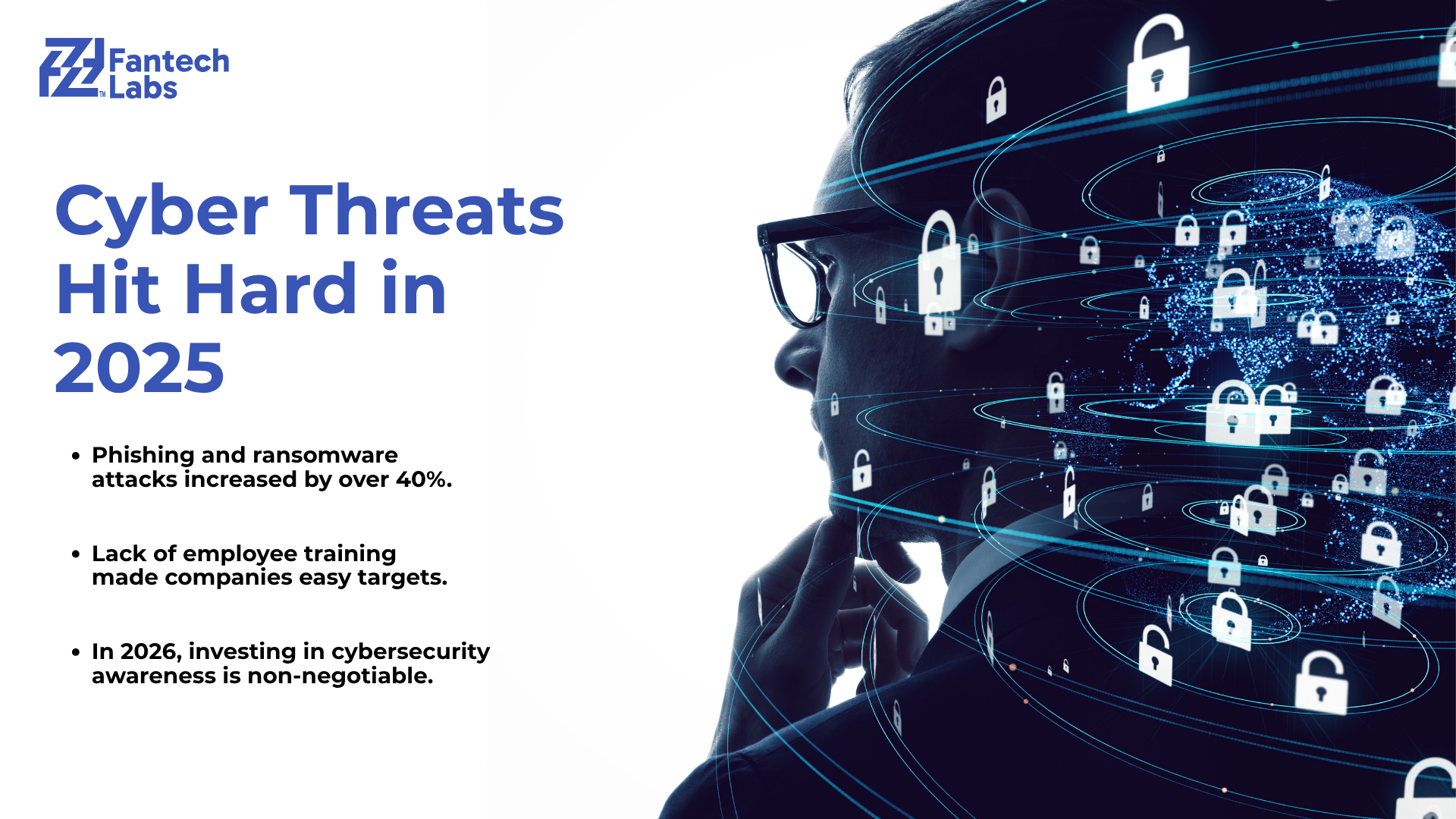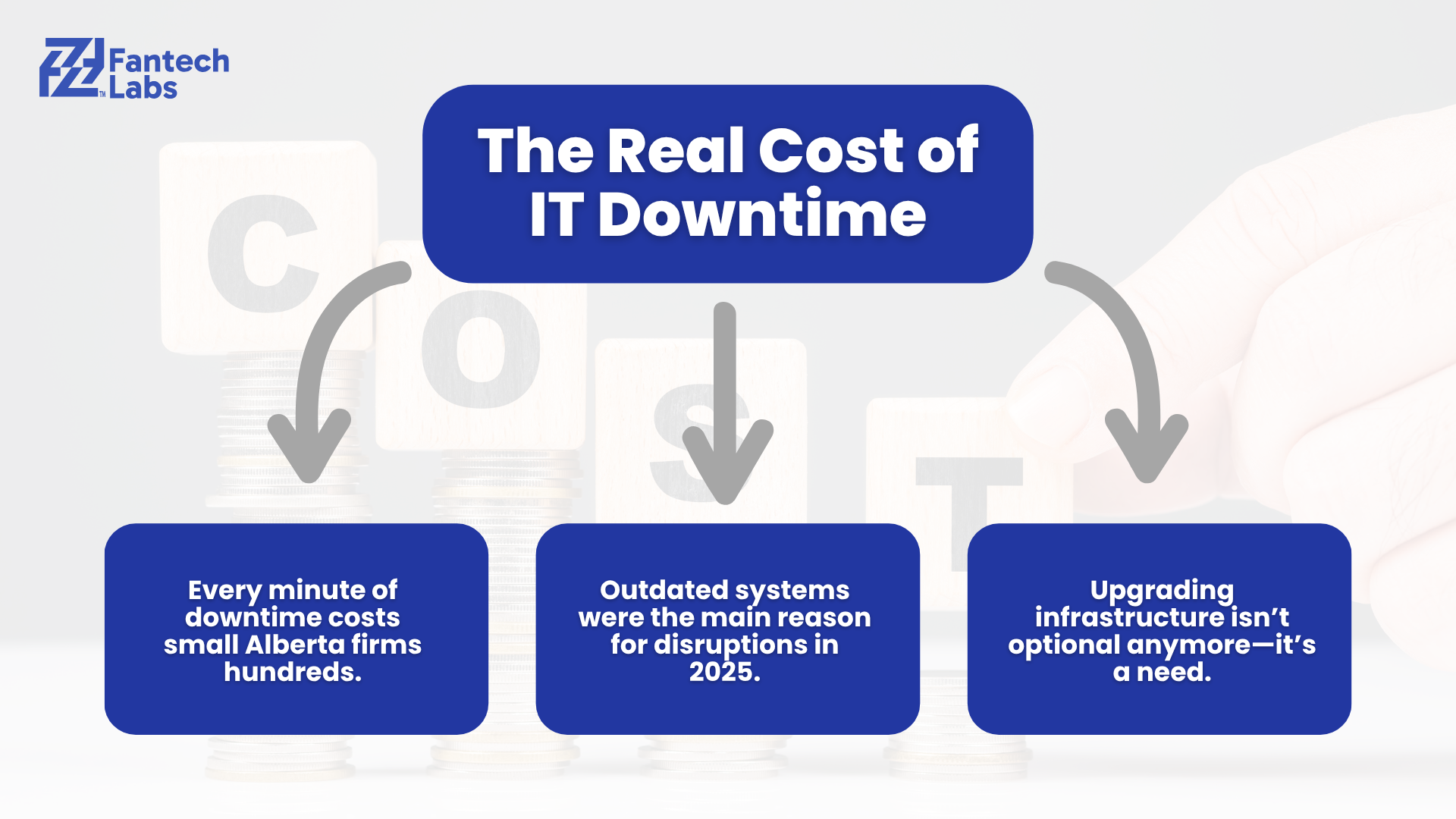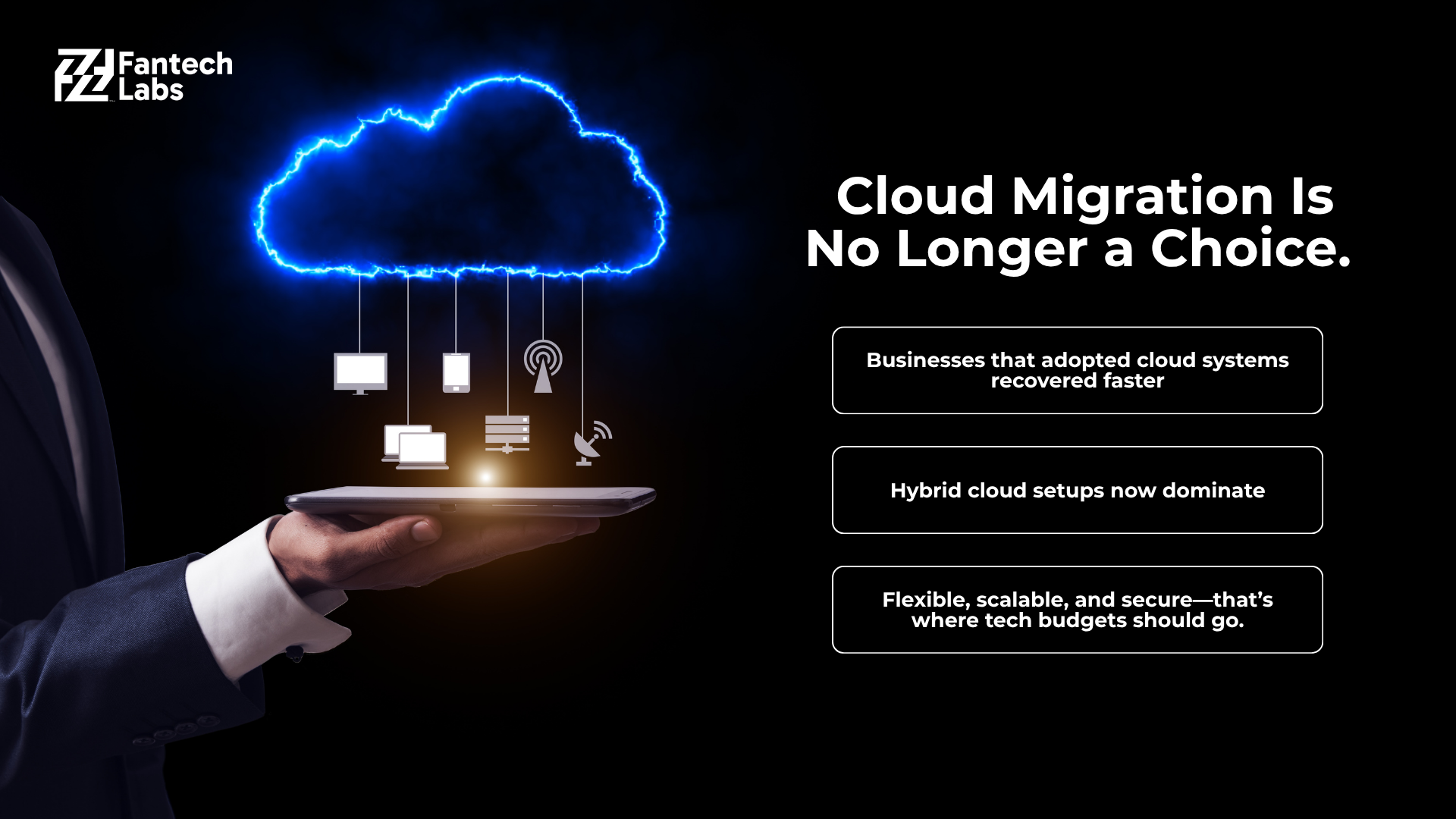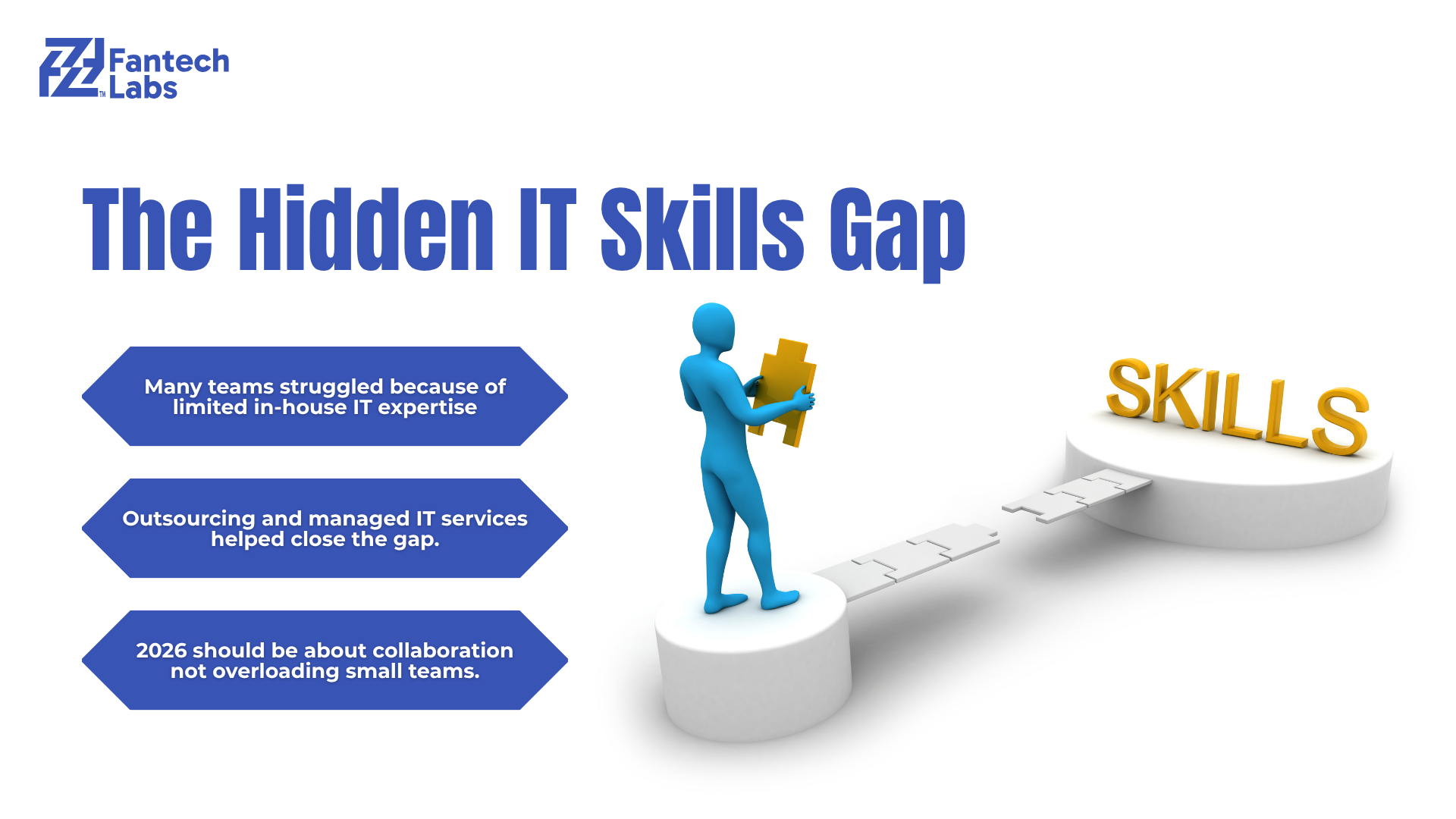The Top IT Challenges Alberta Businesses Faced in 2025 (And How to Tackle Them in 2026)
Find out what the biggest IT problems Alberta firms had to deal with in 2025 and what you need to do in early 2026 to stay ahead.

Updated: October 2025
Introduction
You know the pressure is real if you run a business in Alberta that employs technology. I work with Fantech Labs, and we've helped a lot of businesses in Alberta build digital systems, fix IT problems, and get smarter. We've seen the same problems come up over and over again for businesses in 2025.
This isn't about what could go wrong next year; it's about what's going wrong right now and how you can get ready for 2026 by doing something today.
These are the biggest IT problems that businesses in Alberta faced in 2025, based on real-life experiences we've heard from Calgary, Edmonton, and other parts of the province.
1. A lot of cybersecurity threats
In 2025, all types of organizations in Alberta will be dealing with more complex threats, such as ransomware, phishing, and attempts to steal data. Research shows that using more digital tools also increases danger. arXiv
Our story: One of the manufacturing companies in Alberta that we worked with had old endpoint security. A hacking attempt that seemed insignificant locked up important systems and caused downtime. We helped them set up EDR (Endpoint Detection & Response), daily alerts, and a defined playbook. This lowered their risk and gave them peace of mind.
What you need to do: Make sure you monitor your systems 24/7, run phishing drills often, fix systems right away, and incorporate cybersecurity in your budget from the start.

2. Limited budget and rising costs of IT
Because of high inflation and uncertainties in the economy, IT budgets are tight. "We know we need new systems, but the cost just keeps going up," said one business owner in Alberta.
We told a small service business in Edmonton to convert from buying hardware once to a monthly model with a managed service provider (MSP). That change freed up money, made things more reliable, and made costs more predictable.
Action step: Look at whether certain IT costs may be switched from CAPEX to OPEX, negotiate contracts that are flexible, and keep a close eye on the return on investment (ROI) of your tech purchases.

3. Problems with moving to the cloud and managing data
A lot of organizations in Alberta are moving to the cloud, but if they don't plan, they could run into problems with data access, rights, integration, and security.
Our story: A consultancy firm in Calgary tried to move to Microsoft 365 and Azure, but they couldn't get remote access and data visibility. We helped them change their user rights and cloud backup plan, which made things run better and less confusing.
For 2026, you should map out your on-premise and cloud systems, make sure everyone knows their duties when it comes to data access, test migration with pilot groups before rolling it out to everyone, and include continuous backup and audit logs.

4. Helping with hybrid and remote work models
For a lot of firms in Alberta, hybrid work is no longer an option. However, supporting distant endpoints, various locations, devices, and secure access makes things more complicated.
Example: A company that approved us to get this done had several teams in Calgary, Edmonton, and other places, but they didn't have a central way to handle their devices. We added unified endpoint management and secure VPN access, which made things easier for users and cut down on help desk tickets.
What to check: Make sure your remote endpoints are safe, standardize your device policies, employ zero-trust access when you can, and make sure your IT support model can grow with your needs.
5. Infrastructure & Network Performance Gaps
Old servers, slow networks, and unstable technology all add hidden expenses and make things harder. A one-hour downtime can really hurt productivity.
Our story: Because of limited connectivity and old infrastructure, a non-profit business in Alberta faced frequent downtime. We helped them get better switches, organize their cables more effectively, and provide additional redundancy, which significantly improved the stability of their connections.
What to do next for your business: Check your infrastructure, see how well your network works when it's busy, make sure you have backup power, and plan when to refresh your important hardware.

6. Changing rules for data privacy and compliance
Businesses in Alberta have to deal with PIPEDA, standards that are relevant to their industry, and higher expectations for data protection. Following the rules isn't optional; it's a display of trust.
Our story: A health-tech company in Calgary had to deal with audits and manual reporting. We made them a compliance portal that automated a lot of the tracking and paperwork, which made it easier to be ready for an audit.
Pro tip: Review your datacollection processes, update your rules, train workers on privacy procedures, and ensure your systems have audit logs and encryption built in.

FAQs
Do small businesses in Alberta need IT services that are as good as those for big companies?
Yes. Being big doesn't keep you safe from threats or problems. Proactive IT support is quite helpful for companies that are on a tight budget.
How often should we update our infrastructure?
It's time if your system is more than three years old, or if it keeps slowing down or going down. Waiting only makes things more dangerous and expensive.
Is moving to the cloud always less expensive?
Not by default. The shift can save money, but only if it is done right. Cloud migration might make things more complicated and cost more if you don't plan beforehand.
How can we ensure that remote work is both safe and flexible?
Use centralized device management, strict access rules, and think about zero-trust models. Hybrid shouldn't mean less security.
Disclaimer
This post is simply meant to give you information and is based on what people in the business saw in October 2025. Before making big decisions on infrastructure or compliance, please talk to IT experts.
About the Author
About the Author
Written by Faraz, Digital Expert & IT Consultant at Fantech Labs
With over 3 years of experience in system audits and technical infrastructure, Faraz specializes in helping Alberta businesses navigate complex IT challenges. From cybersecurity to cloud migration, he focuses on building resilient digital systems that protect revenue and ensure operational continuity for companies in Calgary and Edmonton.
Connect with him on LinkedIn.
